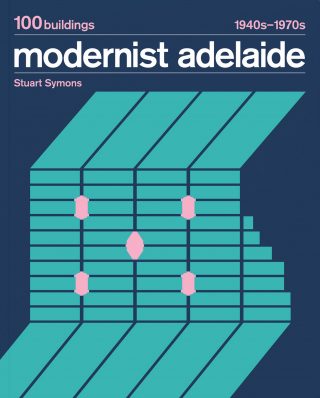Modernist Adelaide: celebrating South Australia's mid-century architecture
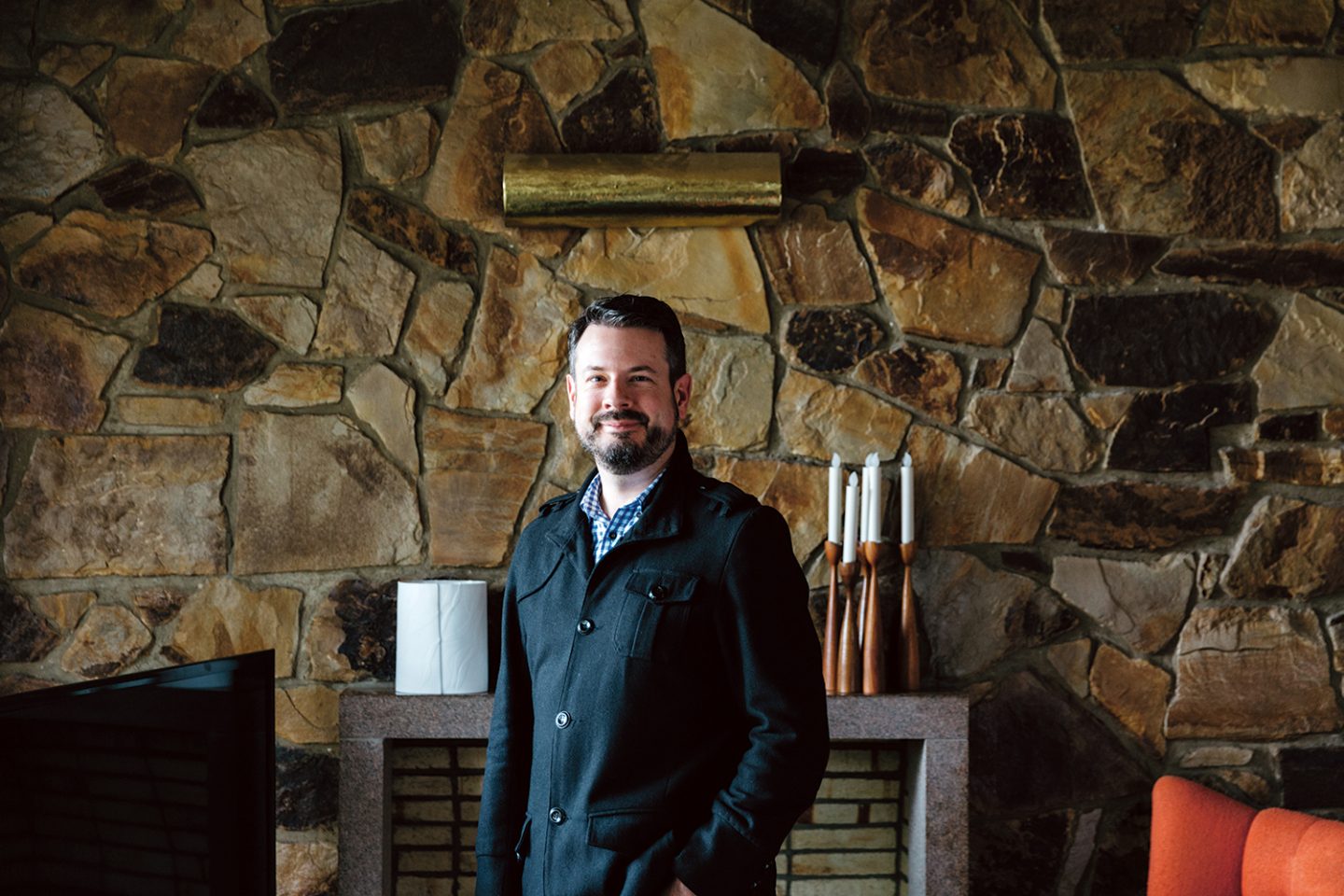
In post-war Adelaide, local architects brought the innovation and idealism of Europe and American modernist movements to the city’s skyline and suburbs. From a cult Instagram following to a series of sell-out tours, Modernist Adelaide historian Stuart Symons is helping Adelaide better appreciate its mid-century heritage.
“You go to America and you might do a Frank Lloyd Wright tour or something like that, but the equivalents here aren’t household names at all,” Symons tells The Adelaide Review from across a particularly charming mid-century living room in Fitzroy. “People might know Harry Seidler or Robin Boyd in Melbourne, but in Adelaide I don’t think anyone would particularly know any signature architects of this period off the top of their head.”
As Symons himself began to look closer at his city, he started posting his findings to Instagram – the social media platform of choice for keen design and architecture enthusiasts. As his follower count rose higher, his research probed deeper. “The architect Jack Cheesman studied abroad in the late 1930s in New York – he saw the Empire State Building being built – and was probably one of the first [local] architects to be exposed to modernism over there,” he says, citing Cheesman’s since-demolished Thomas H Webb building on Waymouth Street as a sign of things to come.
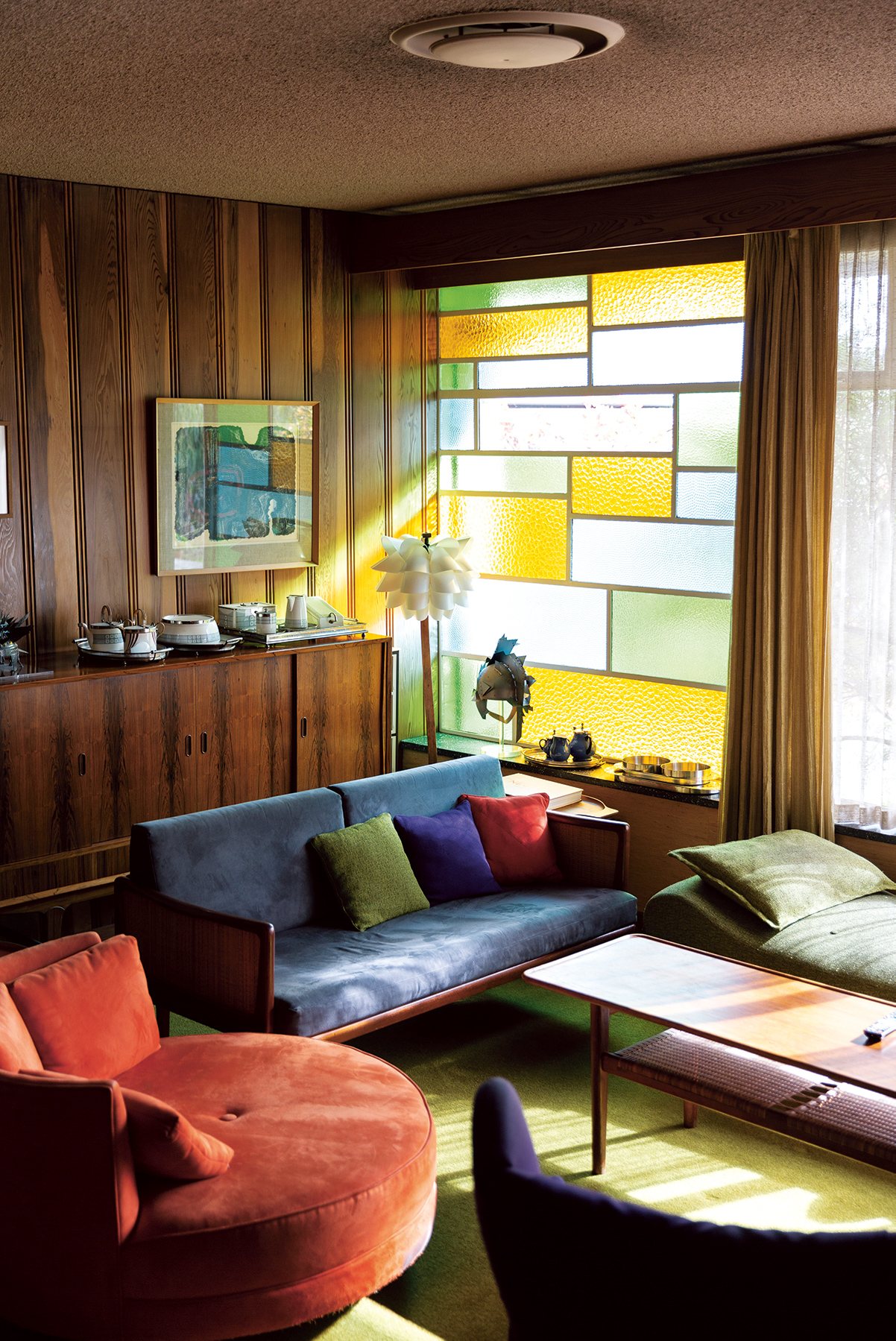
The arrival of Melbourne architect Jack McConnell, Symons says, proved another decisive moment. He worked with Philip R. Claridge and Associates on the former Bank of New South Wales building on North Terrace, now home to 2KW and Jamie’s Italian, and Deepacres apartments in North Adelaide. “They both opened in 1942, and were two of the first major buildings to move from that more ornamental style of architecture of classical Georgian, even Art Deco style, to the more functional, stripped back and clean lines of modernist architecture.”
Talk of Adelaide’s ‘architectural character’ is often shorthand for stately Victorian and Edwardian buildings, but these bursts of modernism are the striking reminders of a turning point in the state’s history, as the post-war industrial boom saw skylines rise and metropolitan Adelaide’s footprint expand. “After the Second World War you had a whole cohort of a new breed of architects, some of whom might have served in the armed forces as pilots or engineers and been exposed to this stuff overseas.”
The movement peaked with a 1956 Australian Architectural Convention exhibition in Botanic Park that showcased these bold new design principles, construction techniques and materials. The same year also saw the completion of Victoria Square’s MLC Building and the Robin Boyd–designed Walkley House in North Adelaide.
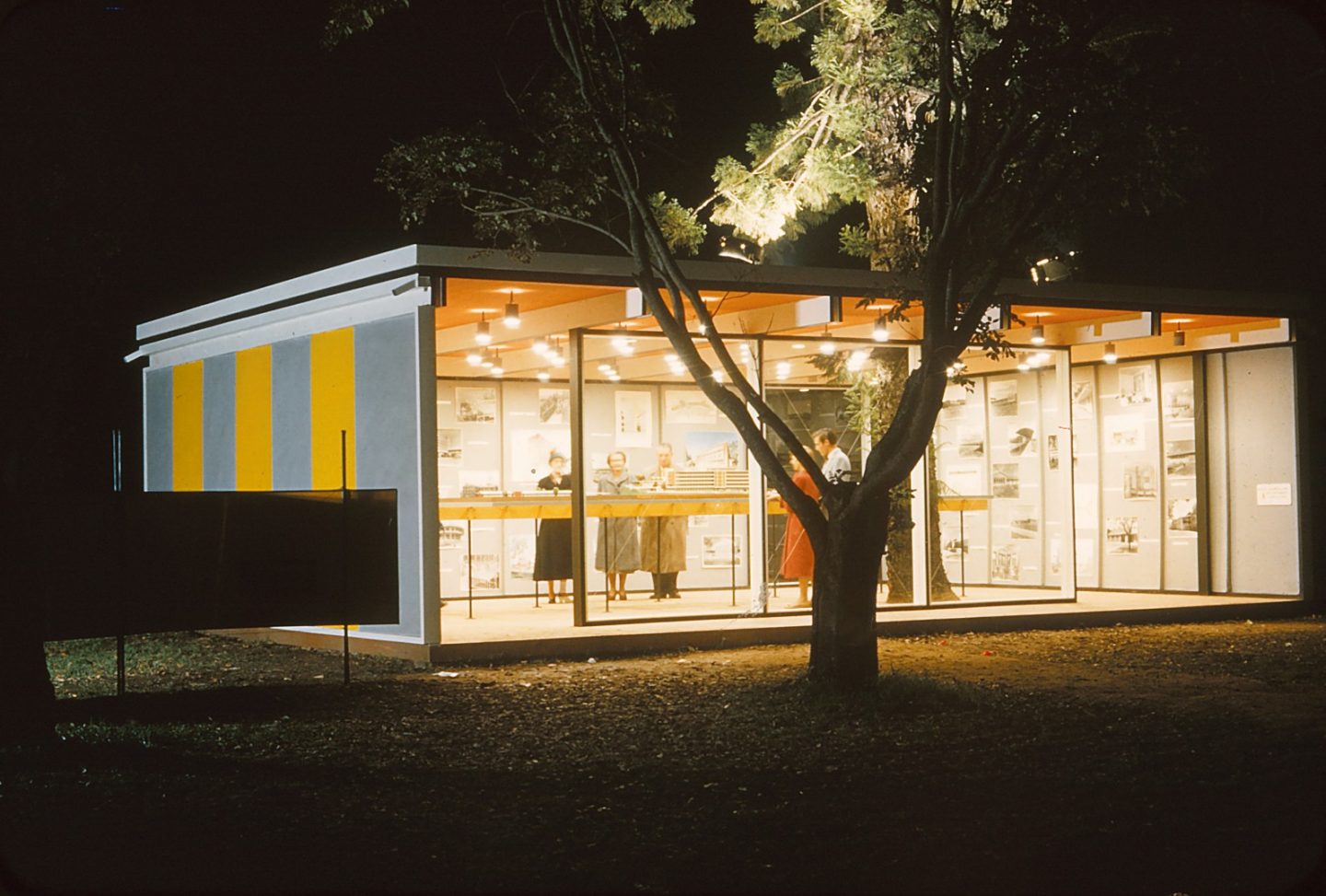
“It would have been like a UFO landing,” Symons says of the MLC Building. “You look at Advertiser articles from the time and they were really excited about this thing from the future – and you can see around the commercial part of Adelaide many of those buildings are still around.”
But the Modernist Adelaide story is also one of the home. “The other element would have been the suburbs, and the opening up of land that would previously have been farmland or market gardens for the baby boomer,” Symons says. “Both the subdivision of areas to the north and south, but also in the foothills – areas like Beaumont and Torrens Park which had otherwise been too hilly or difficult to build on. Modernism was embracing new technologies like reinforced steel and concrete and glass, and they could actually build more economical buildings on difficult sites.”
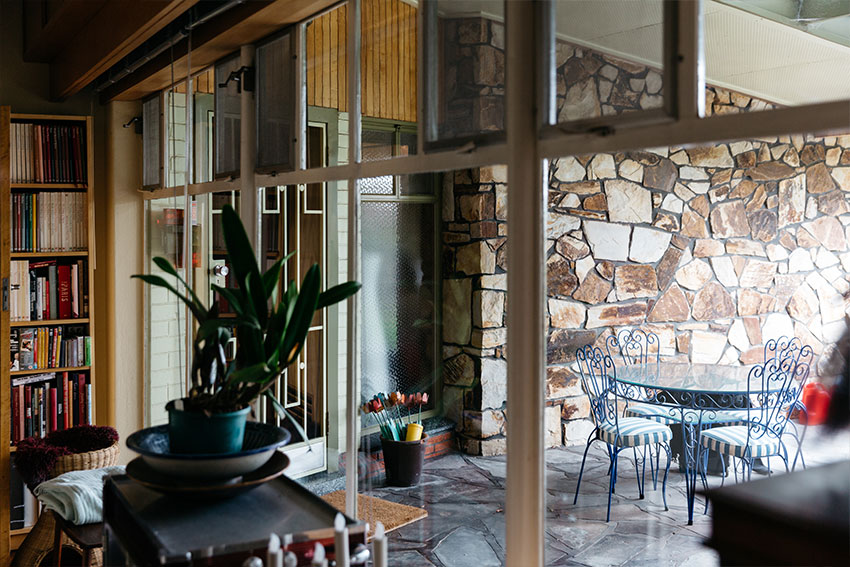
In late 2017, Symons turned his online project into a series of CBD walking tours, and found his audience was just as hungry for real-world experiences. “I certainly never dreamed that it would grow to what it’s become, this community of interest that keeps growing and wanting to participate,” he says. The Modernist Adelaide program has since grown to include a series of house tours as home owners open up their own mid-century suburban time capsules, and in May the History Council of South Australia named Symons South Australian Emerging Historian of the Year.
Many modernist structures invited confusion or contempt when first erected, and have subsequently inspired little sympathy when flattened for newer developments (pour one out for Otto Hajek’s Festival Centre Plaza creations). “When the MLC building was built, a lot of traditionalists shook their heads in horror as this thing went up over Victoria Square, in stark contrast to the GPO or the Treasury. You often hear the term ‘concrete monstrosities’ – it is architecture that can be polarising.”
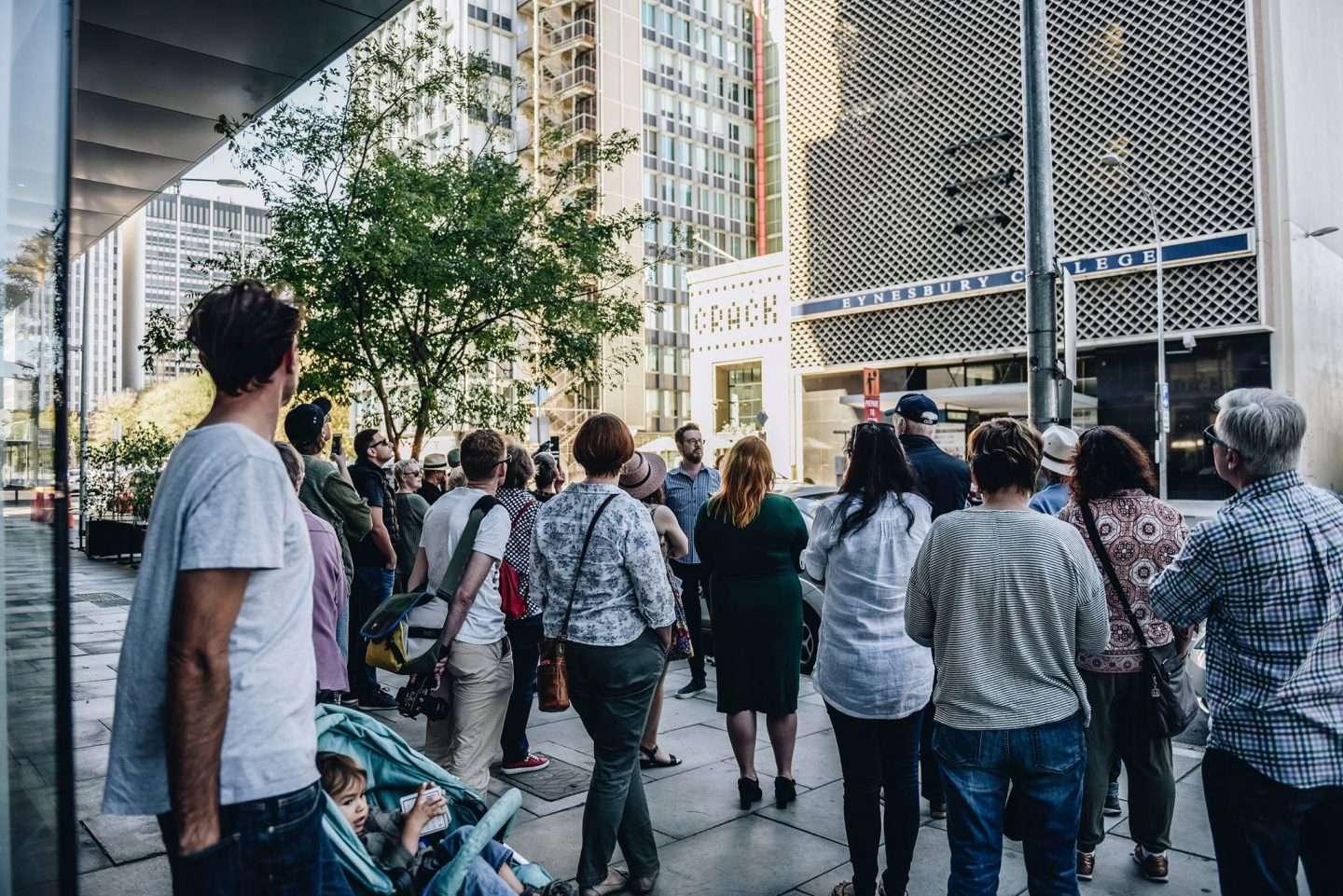
And yet, Symons’ tours continue to sell out within hours of being posted online, proving the design principles and achievements of modernism are perhaps more timeless than their critics first claimed. “There seems to have been a public resurgence of interest,” he says, “but by the same token I think it’s probably a period that certain people have always really loved. Whether it’s because they grew up in a house like that, or built one, or can appreciate that often it’s just good design.
“I think there’s a real joy in discovering the stories of these buildings, buildings you walk past every day and might never give a second glance,” he says. “It’s looking up and noticing the beauty in the everyday, and getting a bit of the context of what these Adelaide buildings are referencing in an international setting.”
